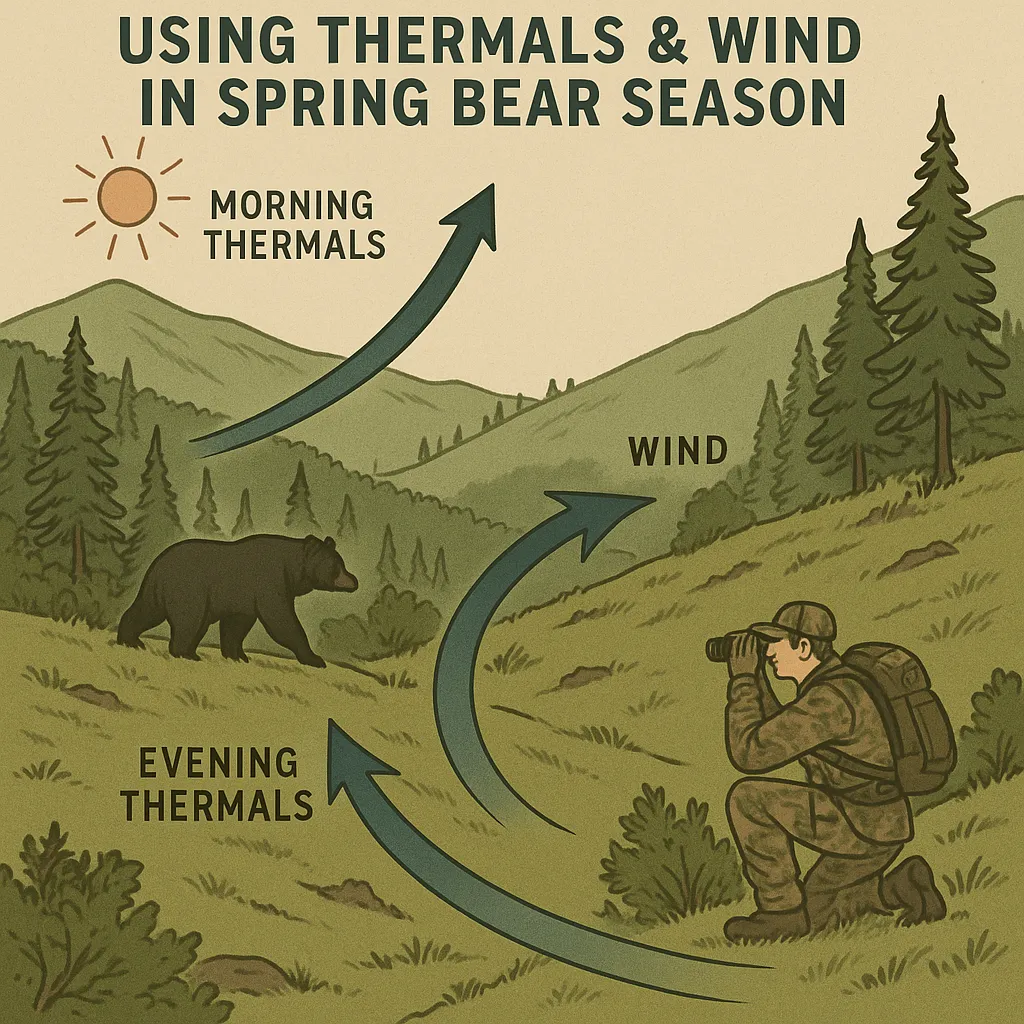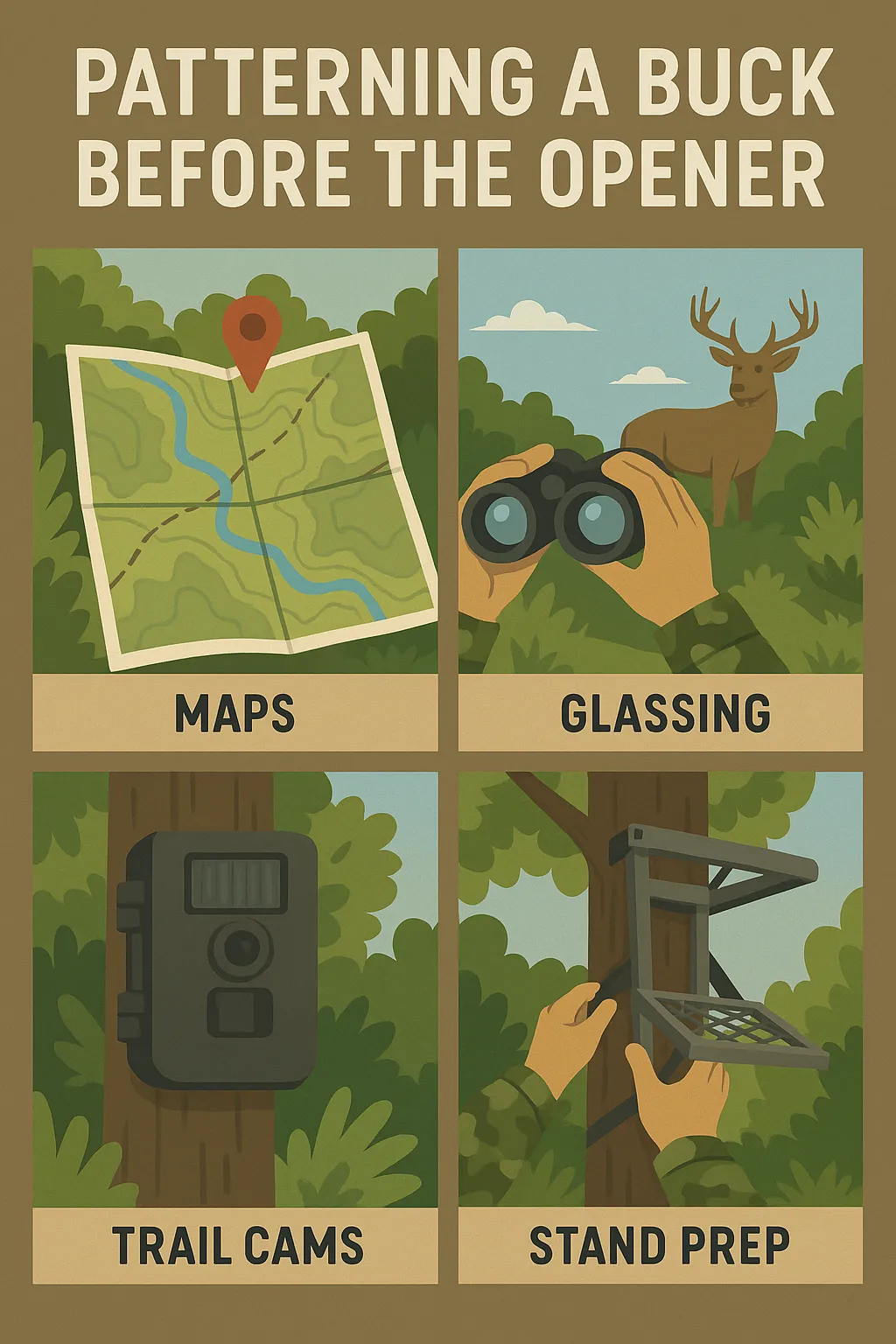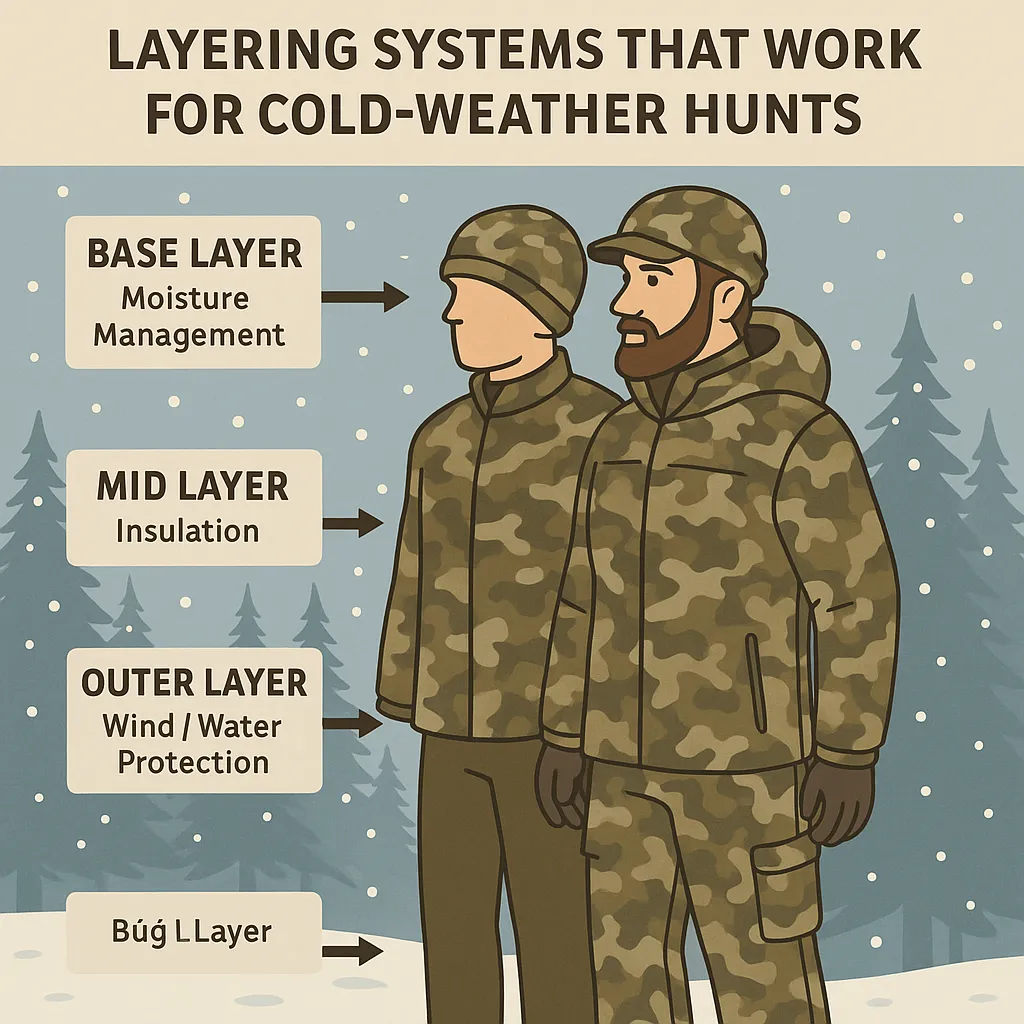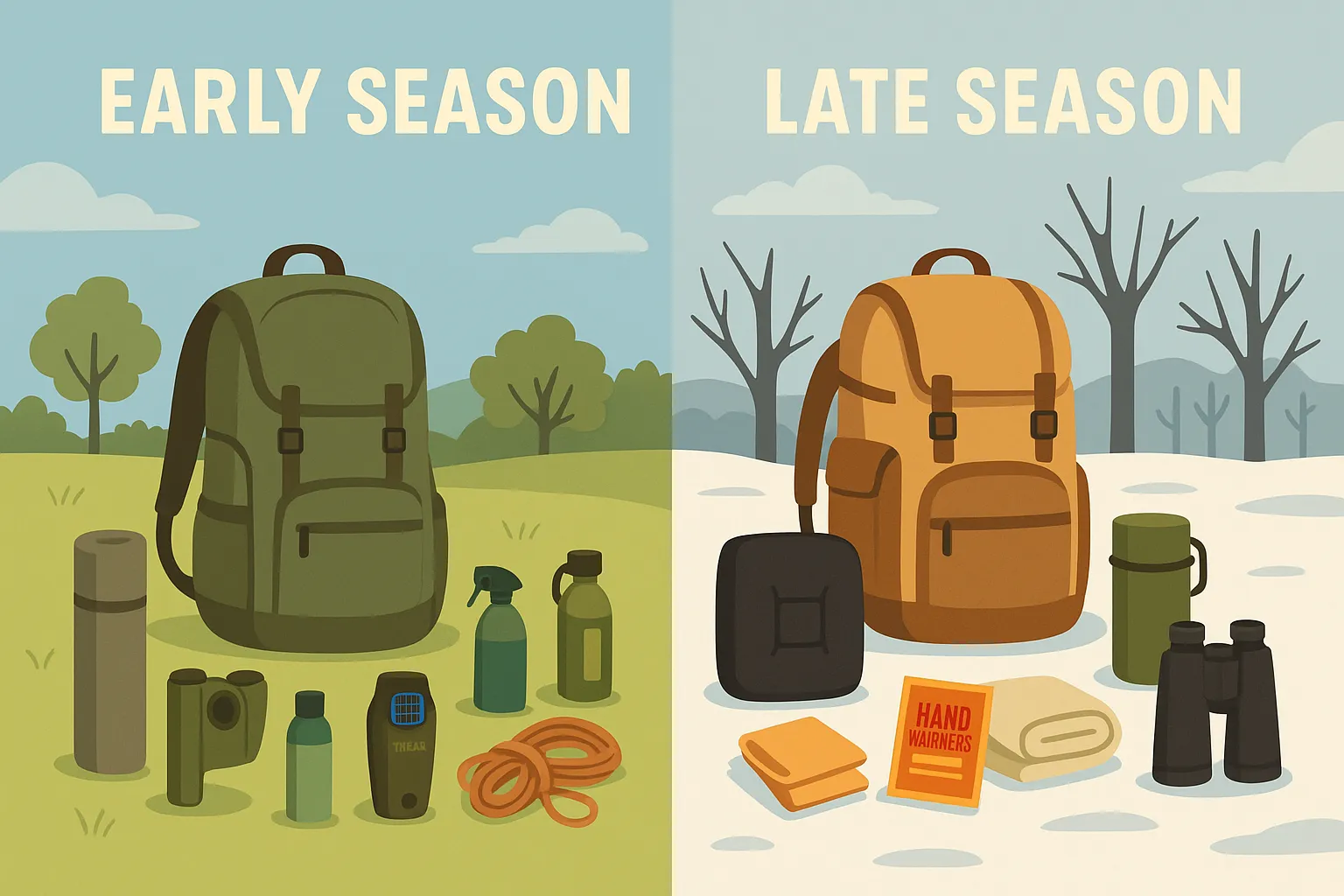
Using Thermals & Wind in Spring Bear Season
In spring bear hunting, the bear’s nose is your biggest enemy—and the wind is your greatest tool. Whether you’re glassing green slopes in Montana or sitting over bait in Alberta, understanding how thermals and wind interact with terrain can be the difference between a close encounter and an empty tag.
This is your tactical guide to reading wind, mastering thermals, and using both to your advantage when chasing spring bruins.
🧠 Why Wind & Thermals Matter in Bear Hunting
-
Bears have incredible olfactory systems—7x more scent receptors than a bloodhound
-
Spring bears move primarily for food, not curiosity
-
They rely on wind-based scent checking as their primary survival mechanism
-
Thermals shift rapidly with sun, slope angle, and vegetation cover in spring
🎙️ “You can spot a bear from a mile off, but if your scent reaches him first—he’ll vanish before your boots hit the ridge.”
— Travis G., Idaho Panhandle
🌄 Morning Thermals: Updraft Advantage
🧭 How They Work:
-
At sunrise, air heats and rises
-
Thermals pull uphill, carrying your scent upward
-
Bears often feed low in drainages or openings—expect upward movement post-feed
📍 Best Morning Tactics:
-
Glass from mid-elevation ridges or finger points
-
Stay above feeding areas to keep thermals pulling your scent away
-
Hunt eastern-facing slopes—they green up faster, attract bears earlier
🛠️ Gear Tip: Milkweed or wind floaters are better than powder—track real thermals, not just surface breeze
🎙️ “I had a bear feeding in a chute 300 yards below me. Thermals held uphill until 10AM—gave me the shot window I needed.”
— Julie M., British Columbia
🌞 Midday Thermals: Variable & Volatile
⚠️ What to Expect:
-
Wind swirls, thermals weaken, and slope shade creates uneven airflow
-
Bears nap in cool, shadowed beds near timbered shelves
-
Movement slows—but still possible near shady green-ups or water
📍 Midday Tips:
-
Still-hunt along contour lines to keep wind cross-directional
-
Avoid benches and bowls with thermal traps—scent will swirl unpredictably
-
Glass across canyons—your scent won’t reach opposite side
🎯 Best Bear Sign Zones:
-
Dandelion-covered logging roads
-
South-facing slide scars with new grass
-
Timber breaks near creek banks or avalanche shoots
🎙️ “If I can’t trust the wind, I don’t stalk. I back out, watch, and wait. Swirling thermals kill stalks fast.”
— Kory P., Washington Cascades
🌄 Evening Thermals: Downhill Drop
🌘 Behavioral Shift:
-
Sun fades, slope cools, and air begins to sink
-
Thermals now pull downhill, often fast and straight
-
Bears become more active, hitting lower green zones and open creek benches
📍 Evening Tactics:
-
Drop elevation and glass upward into shaded shelves
-
Stalk from low to high only when the thermal is confirmed steady
-
Evening is your best “backdoor” window if you’ve patterned a bear earlier
🧰 Best Use of Wind + Thermals Combined:
-
Use wind to approach laterally
-
Use thermals to time your final 100 yards
-
If thermals aren’t stable, wait it out or adjust elevation
🎙️ “That last light bear was feeding at 80 yards—but thermals dropped hard at 7PM. I slid low and circled with the falling wind to close the gap.”
— Jason L., Montana Bitterroots
📦 Thermal & Wind Gear Essentials
| Item | Why It Matters |
|---|---|
| Milkweed puffs or wind floater | Best visual for actual thermal paths |
| OnX with 3D terrain | Predicts slope direction and thermal drift zones |
| Bino harness with rangefinder | Long glassing = less movement, more scent control |
| Lightweight windproof shell | Silent movement in variable crosswinds |
| Compact tripod or trekking poles | Stable glassing in wind-heavy ridges |
🧠 Pro Tips for Scent and Thermal Mastery
✔️ Think in Elevation Layers – Wind behaves differently at 4,000 feet vs. 6,500 feet
✔️ Check Thermals Every 15 Minutes – Spring sun changes fast; test often
✔️ Set Up Before Shift – Get into position before updrafts become downdrafts
✔️ Use Ridges Like Wind Tunnels – Predictable airflow = better control
✔️ Trust Your Nose & Tools – When in doubt, back out and wait for better airflow
🎙️ “I watch the trees as much as the bear. If the leaves start twirling, I know the thermals are about to betray me.”
— Hannah V., Alaska
📣 Best Apps & References for Wind & Terrain
-
Apps: HuntStand (wind cone + terrain), Windy (forecast layers), BaseMap
-
Tools: Garmin inReach Mini (mark wind shift zones), Spartan Camera (real-time observation)
-
Education: ElkShape “Thermal Mapping 101”, Born & Raised “Bear Country Winds”
💡 Pro Tip: Thermals always move—but smart hunters plan where they’ll move next. You’re not hunting the bear’s eyes. You’re hunting around his nose.
🌟 Final Shot: Let the Wind Lead the Hunt
Spring bear hunting rewards those who adapt. Bears move slow and deliberate—but they never ignore the wind. Neither should you. When you learn to read thermals, slope behavior, and scent patterns, you’re not just hunting harder—you’re hunting smarter.
“Thermals tell you when to move. Wind tells you how to move. Together, they tell you when to kill.”
Leave A Comment
Related Posts
Layering Systems That Work for Cold-Weather Hunts When the mercury […]
What’s in My Pack: Early Season vs. Late Season Essentials […]






